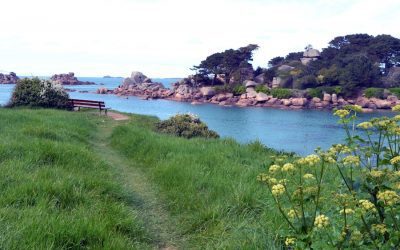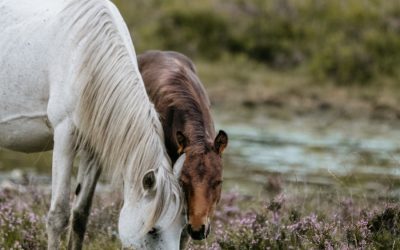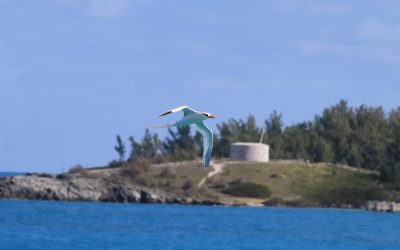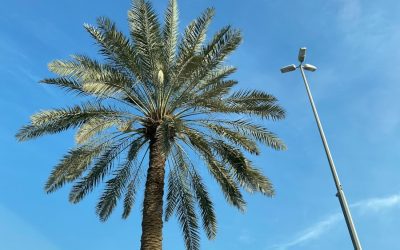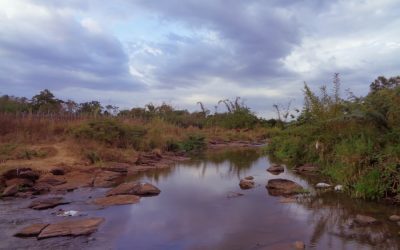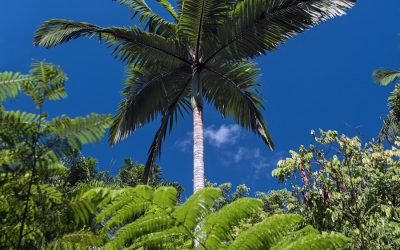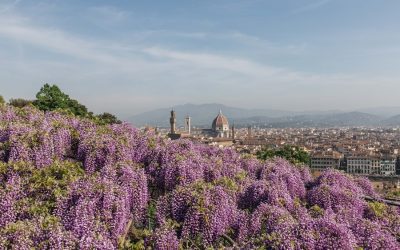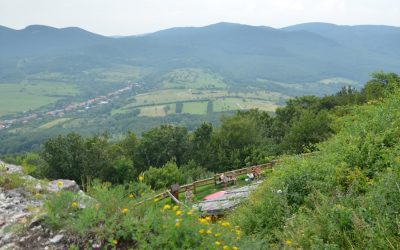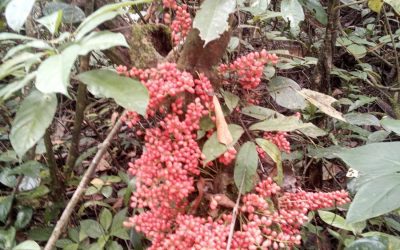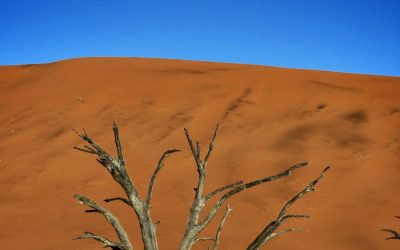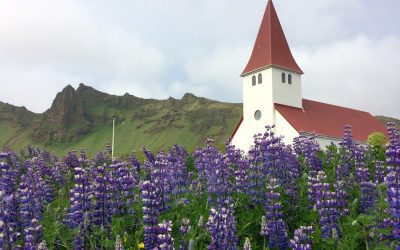Explore the World Through Geography, Natural Resources & Daily History
Clear, reliable and engaging guides that help you understand our planet — from UK geography education to global natural resources and On This Day history events.
Explore, discover, and learn about the wonders of our world! At Earth Site, we’re passionate about bringing geography, history, and science to life for curious minds of all ages. Whether you’re delving into historical events, uncovering the mysteries of the natural world, or seeking interactive resources, you’re in the right place.
Here, you can uncover the stories behind historical events, explore the natural wonders of our planet, and gain valuable insights into how the Earth’s systems shape our daily lives. From the towering peaks of mountain ranges to the far-reaching impacts of human innovation, we aim to make every topic both engaging and informative.
Start your journey of discovery with us today, and let’s make learning an adventure!
What We Cover
Earth Site brings together engaging and accessible educational content designed to help you understand the world, its history, and its natural systems.
🌍 Geography Education (UK & Worldwide)
We publish clear, easy-to-understand geography resources for students, teachers and curious learners. Our guides support geography education in the UK and cover physical geography, climate, ecosystems, population, and global development.
⛏️ Natural Resources & Environmental Geography
Explore detailed country profiles covering natural resources, mining, energy, geology and global environmental challenges. We show how nations manage minerals, water, land and ecosystems, and why these resources matter.
📅 On This Day in History
Every day has a story. Our On This Day history series features major events, anniversaries, traditions, and cultural milestones from around the world — with timelines, context, and fun facts.
TIMELINE
Exploring the Flora and Fauna of Jersey
Jersey, the largest of the Channel Islands, is a remarkable microcosm of biodiversity, showcasing a unique blend of flora and fauna that reflects its geographical position and varied habitats. Nestled in the English Channel, just off the coast of Normandy, France, Jersey boasts a temperate maritime climate that fosters a rich tapestry of life. The island’s diverse ecosystems range from coastal cliffs and sandy beaches to lush woodlands and agricultural fields, each supporting a myriad of species. This intricate web of life is not only vital for the ecological balance but also contributes significantly to the island’s cultural heritage and economy. The biodiversity of Jersey is particularly noteworthy due to its isolation and the influence of both British and French ecosystems. The island serves as a crucial stopover point for migratory birds and is home to several endemic species. The interplay between human activity and natural habitats has shaped Jersey’s landscape over centuries, leading to a unique blend of cultivated and wild environments. Understanding this biodiversity is essential for conservation efforts and for appreciating the natural beauty that Jersey has to offer. Summary Jersey is home to a diverse range of flora and fauna, making it a unique destination for nature enthusiasts. The island’s flora includes rare orchids, wildflowers, and unique coastal plants, adding to its rich biodiversity. Jersey’s fauna is equally diverse, with a variety of bird species, marine life, and small mammals inhabiting the island. Conservation efforts in Jersey aim to protect and preserve the island’s natural habitats and wildlife for future generations to enjoy. Exploring Jersey’s coastal ecosystems offers opportunities to discover tidal pools, marine life,...
Exploring the Rich Flora and Fauna of Denmark
Denmark, a Scandinavian nation renowned for its picturesque landscapes and rich cultural heritage, is also home to a remarkable array of biodiversity. This small yet diverse country boasts a variety of ecosystems, ranging from coastal wetlands and sandy beaches to lush forests and rolling agricultural lands. The geographical positioning of Denmark, with its proximity to both the North Sea and the Baltic Sea, contributes significantly to its unique biodiversity. The interplay of marine and terrestrial environments creates habitats that support a wide range of species, making Denmark an intriguing case study in biodiversity conservation. The importance of biodiversity in Denmark extends beyond mere aesthetics; it plays a crucial role in maintaining ecological balance and supporting human livelihoods. Biodiversity contributes to ecosystem services such as pollination, water purification, and climate regulation. Furthermore, the preservation of diverse species is essential for scientific research, education, and cultural identity. As global awareness of environmental issues grows, understanding and protecting Denmark’s biodiversity has become increasingly vital, not only for the nation itself but also for the broader ecological health of the planet. Summary Denmark is home to a rich and diverse biodiversity, with unique flora and fauna species thriving in its various ecosystems. The diverse ecosystems of Denmark include coastal areas, woodlands, wetlands, and grasslands, each supporting a wide range of plant and animal life. Unique flora and fauna species in Denmark include the European otter, red deer, and a variety of bird species such as the white-tailed eagle and the common crane. Conservation efforts in Denmark have led to the establishment of protected areas and national parks, providing safe havens for the country’s...
Exploring the Bahamas’ Flora and Fauna
The Bahamas, an archipelago comprising over 700 islands and cays, is renowned not only for its stunning beaches and crystal-clear waters but also for its rich and diverse flora and fauna. This tropical paradise, located in the Atlantic Ocean, boasts a unique ecosystem shaped by its geographical isolation and varied habitats, ranging from lush mangroves to arid pine forests. The interplay of these environments has given rise to a remarkable array of plant and animal species, many of which are found nowhere else on Earth. The Bahamas serves as a vital sanctuary for biodiversity, making it an essential area for ecological study and conservation. The islands’ flora and fauna are influenced by a combination of factors, including climate, soil types, and the surrounding marine environment. The subtropical climate, characterised by warm temperatures and seasonal rainfall, supports a variety of ecosystems that are home to both terrestrial and marine species. The Bahamas is not only a haven for tourists seeking sun and relaxation but also a critical area for researchers and conservationists dedicated to understanding and preserving its natural heritage. The intricate relationships between the islands’ plants and animals highlight the importance of maintaining ecological balance in this fragile environment. Summary The Bahamas is home to a diverse range of plant and animal species, making it a hotspot for nature enthusiasts. The plant life in the Bahamas is incredibly varied, with over 1,000 species of native and introduced plants. The wildlife in the Bahamas is equally fascinating, with a wide array of bird, reptile, and marine life to discover. The Bahamas is home to many endemic species, including the Bahama...
Discovering the Flora and Fauna of Bahrain
Bahrain, a small archipelago in the Arabian Gulf, is often overlooked when it comes to biodiversity. However, this nation boasts a rich tapestry of flora and fauna that reflects its unique geographical position and climatic conditions. The island’s environment is characterised by arid landscapes, coastal areas, and a variety of habitats that support a surprising array of wildlife. From the date palms that dominate the landscape to the diverse marine life found in its surrounding waters, Bahrain’s natural heritage is both fascinating and vital to its ecological balance. The flora of Bahrain is primarily adapted to the harsh desert climate, with many species exhibiting drought-resistant characteristics. The island is home to several endemic plant species, which have evolved to thrive in the saline soils and limited freshwater resources. Meanwhile, the fauna includes a mix of resident and migratory species, with birds being particularly prominent due to Bahrain’s strategic location along migratory routes. This unique blend of terrestrial and marine ecosystems makes Bahrain a significant area for biodiversity, deserving of exploration and appreciation. Summary Bahrain is home to a diverse range of flora and fauna, making it an ideal destination for nature enthusiasts. The unique ecosystems of Bahrain include desert, coastal, and marine environments, each supporting a variety of plant and animal species. Several species in Bahrain, such as the Arabian oryx and the hawksbill turtle, are classified as endangered and require conservation efforts to protect their populations. Bird watching in Bahrain offers opportunities to spot migratory and resident bird species in various habitats, including wetlands and coastal areas. Exploring the marine life of Bahrain through activities like snorkelling and...
Exploring the Wildlife of Eswatini
Eswatini, formerly known as Swaziland, is a small landlocked nation in Southern Africa, renowned for its rich biodiversity and vibrant ecosystems. Nestled between South Africa and Mozambique, this kingdom boasts a variety of habitats, ranging from savannahs and grasslands to dense forests and wetlands. The country’s wildlife is a reflection of its diverse landscapes, providing a sanctuary for numerous species, some of which are endemic to the region. The intricate relationship between the people of Eswatini and their natural environment has fostered a deep respect for wildlife, making conservation an integral part of the national identity. The wildlife of Eswatini is not only a source of national pride but also a vital component of the local economy, particularly through tourism. Visitors flock to the country to experience its natural beauty and observe its unique fauna in their natural habitats. The government and various organisations have recognised the importance of preserving these natural resources, leading to the establishment of national parks and reserves that protect both wildlife and their habitats. This commitment to conservation is crucial, as many species face threats from habitat loss, poaching, and climate change. Understanding the complexities of Eswatini’s wildlife is essential for appreciating the efforts being made to safeguard it for future generations. Summary Eswatini is home to a diverse range of wildlife, including many iconic species such as elephants, rhinos, and lions. The country boasts several national parks and reserves, such as Hlane Royal National Park and Mlilwane Wildlife Sanctuary, which offer unique opportunities for wildlife viewing and conservation. Iconic wildlife species in Eswatini include the black rhino, African elephant, and the elusive leopard,...
Discovering the Biodiversity of New Caledonia: The Flora and Fauna
New Caledonia, an archipelago located in the southwest Pacific Ocean, is a French territory renowned for its stunning natural beauty and rich cultural heritage. Comprising the main island of Grande Terre, along with several smaller islands, New Caledonia is situated approximately 1,200 kilometres east of Australia. The region is characterised by its diverse landscapes, which range from lush rainforests and rugged mountains to pristine beaches and coral reefs. This geographical diversity contributes to the unique ecosystems that thrive within its boundaries, making New Caledonia a hotspot for biodiversity. The indigenous Kanak people have inhabited New Caledonia for thousands of years, and their culture is deeply intertwined with the land and its resources. The territory’s colonial history has also shaped its identity, leading to a blend of indigenous and European influences. Today, New Caledonia is not only a place of natural wonder but also a living testament to the resilience and richness of its cultural tapestry. As a result, it attracts researchers, ecologists, and tourists alike, all eager to explore its unique offerings. Summary New Caledonia is a French territory located in the southwest Pacific Ocean, known for its rich biodiversity and unique ecosystems. The flora of New Caledonia is incredibly diverse, with a high percentage of endemic species found only on the island. The fauna of New Caledonia is equally diverse, with a wide range of unique and endemic species, including the famous New Caledonian crested gecko. New Caledonia is home to a large number of endemic species, meaning they are found nowhere else in the world, making it a globally important biodiversity hotspot. Despite its rich biodiversity, New...
Exploring Italy’s Rich Flora and Fauna
Italy is a country renowned for its rich cultural heritage, but it is equally remarkable for its diverse ecosystems that span across its varied landscapes. From the snow-capped peaks of the Alps in the north to the sun-drenched Mediterranean coasts in the south, Italy’s geographical diversity fosters a multitude of habitats. The Apennine mountain range, which runs down the spine of the country, creates distinct climatic zones that support a wide array of flora and fauna. The northern regions, characterised by their alpine meadows and glacial lakes, are home to species such as the chamois and the golden eagle, while the coastal areas boast unique marine ecosystems teeming with life. In addition to mountainous terrains and coastal regions, Italy’s extensive river systems, such as the Po and the Arno, contribute to its ecological variety. Wetlands and marshes found in areas like the Po Delta provide critical habitats for numerous bird species, including herons and flamingos. The Mediterranean scrubland, known as maquis, is another significant ecosystem that thrives in Italy’s warmer regions, supporting a plethora of plant species adapted to dry conditions. This ecological mosaic not only enhances Italy’s natural beauty but also plays a crucial role in maintaining biodiversity and ecological balance. Summary Italy boasts a diverse range of ecosystems, including mountains, forests, wetlands, and coastal areas, providing habitats for a wide variety of flora and fauna. The country is home to several endangered species, such as the Italian wolf, the Sardinian deer, and the loggerhead sea turtle, highlighting the need for conservation efforts. Italy’s unique flora includes the iconic Mediterranean cypress, the vibrant oleander, and the delicate Italian...
Exploring Dominica’s Rich Flora and Fauna
Dominica, often referred to as the “Nature Island” of the Caribbean, is a treasure trove of biodiversity that captivates scientists, ecologists, and nature enthusiasts alike. This small island nation, located between the French territories of Guadeloupe and Martinique, boasts a unique combination of lush rainforests, volcanic landscapes, and a rich array of ecosystems. The island’s geographical isolation has fostered the development of a diverse range of flora and fauna, many of which are found nowhere else on Earth. The interplay of its mountainous terrain, varying altitudes, and microclimates contributes to the remarkable variety of habitats that support an extensive range of species. The significance of Dominica’s biodiversity extends beyond its aesthetic appeal; it plays a crucial role in maintaining ecological balance and supporting local communities. The island’s ecosystems provide essential services such as water purification, soil fertility, and carbon sequestration. Furthermore, the rich biological heritage is integral to the cultural identity of the Dominican people, who have long relied on their natural surroundings for sustenance, medicine, and spiritual practices. As global awareness of environmental issues grows, understanding and preserving Dominica’s biodiversity has become increasingly important, not only for the island itself but also for the broader Caribbean region. Summary Dominica is home to a rich and diverse range of flora and fauna, making it a hotspot for biodiversity in the Caribbean. The unique flora of Dominica includes over 1,200 species of flowering plants, including many rare and endemic species. Dominica’s diverse fauna includes a variety of bird species, reptiles, amphibians, and marine life, making it a paradise for nature enthusiasts. The island is home to many endemic species, including...
Discovering Bulgaria’s Rich Flora and Fauna
Bulgaria, a small yet ecologically rich country located in Southeast Europe, is renowned for its remarkable biodiversity. Nestled at the crossroads of various climatic and geographical influences, Bulgaria boasts a unique blend of ecosystems that support a wide array of flora and fauna. The country’s varied topography, which includes mountains, plains, rivers, and coastlines, creates distinct habitats that are home to numerous species. This rich tapestry of life is not only significant for ecological balance but also plays a crucial role in the cultural and economic fabric of the nation. The importance of biodiversity in Bulgaria extends beyond mere numbers; it encompasses the intricate relationships between species and their environments. The country is part of the European Union’s Natura 2000 network, which aims to protect the most valuable habitats and species across Europe. Bulgaria’s commitment to preserving its natural heritage is evident in its numerous protected areas, national parks, and reserves. However, the ongoing challenges posed by human activity and climate change threaten this delicate balance, making it imperative to understand and appreciate the wealth of biodiversity that Bulgaria harbours. Summary Bulgaria boasts a rich and diverse biodiversity, with a wide range of ecosystems and endemic species. From the lush forests of the Rhodope Mountains to the unique wetlands of the Danube River, Bulgaria offers a variety of ecosystems to explore. Bulgaria is home to a number of endemic species of flora and fauna, including the Bulgarian fir and the Balkan chamois. Threats to Bulgaria’s biodiversity include habitat loss, pollution, and climate change, which are putting pressure on the country’s unique ecosystems and species. Conservation efforts and the establishment...
Exploring the Flora and Fauna of Bangladesh
Bangladesh, a small yet vibrant country located in South Asia, is often celebrated for its rich cultural heritage and historical significance. However, it is equally important to recognise its remarkable biodiversity, which is a treasure trove of unique flora and fauna. Nestled between the mighty Himalayas and the vast Bay of Bengal, Bangladesh boasts a variety of ecosystems that support an incredible array of species. The geographical diversity, ranging from lush forests and wetlands to coastal mangroves, creates a habitat for numerous organisms, many of which are endemic to the region. The biodiversity of Bangladesh is not merely a backdrop to its human activities; it plays a crucial role in the livelihoods of millions. The country’s natural resources provide food, medicine, and materials for shelter, while also supporting agriculture and fisheries. The Sundarbans, the largest mangrove forest in the world, is a prime example of how biodiversity sustains local communities. However, this wealth of natural heritage faces significant threats from climate change, deforestation, and urbanisation. Understanding and appreciating the biodiversity of Bangladesh is essential for fostering conservation efforts and ensuring the sustainability of its ecosystems. Summary Bangladesh is home to a rich and diverse range of flora and fauna, making it a hotspot for biodiversity. The diverse flora of Bangladesh includes a wide variety of plants, trees, and flowers, with many species unique to the region. The rich fauna of Bangladesh includes a diverse range of mammals, birds, reptiles, and amphibians, with many endangered species in need of conservation efforts. Unique ecosystems in Bangladesh, such as the Sundarbans mangrove forest and the Sylhet tropical rainforest, provide vital habitats for...
Exploring the Rich Flora and Fauna of Namibia
Namibia, a country located in the southwestern region of Africa, is renowned for its remarkable biodiversity, which encompasses a wide array of ecosystems ranging from arid deserts to lush wetlands. The country is home to an impressive variety of flora and fauna, many of which are endemic to the region. This unique biodiversity is largely attributed to Namibia’s diverse climatic conditions, geological formations, and varying altitudes. The Namib Desert, one of the oldest deserts in the world, plays a significant role in shaping the ecological landscape, providing a habitat for specially adapted species that thrive in extreme conditions. The rich tapestry of life in Namibia is not only a source of national pride but also a vital component of the global ecosystem. The country’s commitment to conservation and sustainable practices has garnered international attention, making it a model for biodiversity preservation. With over 4,000 plant species, 650 bird species, and numerous mammals, reptiles, and amphibians, Namibia’s biodiversity is a treasure trove for researchers, conservationists, and nature enthusiasts alike. The interplay between its unique ecosystems and the species that inhabit them creates a dynamic environment that is both fragile and resilient. Summary Namibia boasts a rich and diverse biodiversity, with unique plant and animal species found in its varied landscapes. The country is home to a wide array of unique plant species, including the iconic quiver tree and the welwitschia plant, which can live for over 1,000 years. Namibia’s diverse animal life includes the famous desert-adapted elephants, black rhinos, and a variety of antelope species, making it a prime destination for wildlife enthusiasts. Conservation efforts in Namibia have been successful,...
Exploring the Flora and Fauna of Iceland
Iceland, often referred to as the “Land of Fire and Ice,” boasts a remarkable and diverse ecosystem shaped by its unique geological features and climatic conditions. This Nordic island nation, located in the North Atlantic Ocean, is characterised by its volcanic landscapes, glacial formations, and geothermal activity. The interplay of these elements creates a habitat that supports a variety of life forms, both terrestrial and marine. The stark contrasts between the rugged mountains, expansive lava fields, and lush valleys contribute to an environment that is not only visually stunning but also ecologically significant. The isolation of Iceland has played a crucial role in the development of its ecosystem. With a relatively small human population and limited agricultural practices, many areas remain untouched by urbanisation. This pristine environment allows for the preservation of unique habitats that are home to a range of species, some of which are found nowhere else on Earth. The combination of harsh weather conditions, including long winters and short growing seasons, has led to the evolution of resilient flora and fauna that have adapted to survive in this challenging landscape. Summary Iceland’s unique ecosystem is home to a diverse range of flora and fauna, making it a fascinating destination for nature enthusiasts. The flora of Iceland includes a variety of mosses, lichens, and wildflowers, adapted to the harsh Arctic climate. Iceland’s fauna is characterized by its birdlife, with species such as puffins, Arctic terns, and eider ducks thriving in the country’s coastal areas. Endemic species in Iceland, such as the Icelandic sheepdog and the Icelandic horse, are a testament to the country’s isolated and distinct wildlife....
